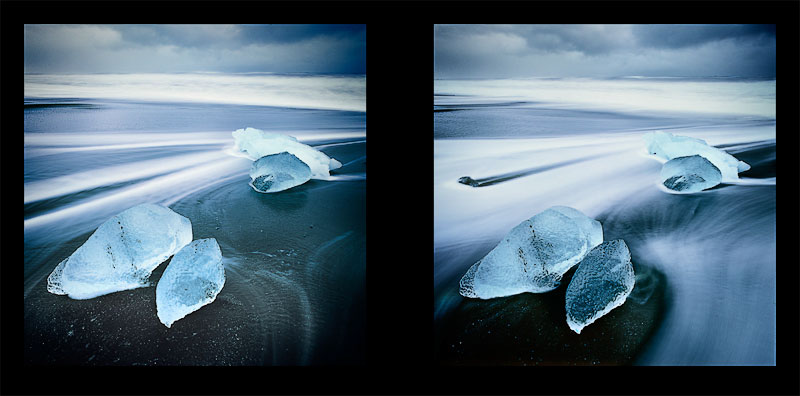While I was staying at Lilians guest house in Lofoten last week, we had a discussion about music which I felt had a lot to bear on the process of photography. Lilian was explaining to me, that when composers wrote their musical manuscripts, they always wrote down the exceptions, the things that should be played differently. They never ever wrote down what was normal practice. It seems that in the classical world of music, we have very little knowledge of what was assumed as standard practice back then. So when we come to interpret manuscripts from the past, we only know about the exceptions and have no idea how the piece would have been played based on fashions of the time.
Our little conversation got me thinking about just how much we learn from looking at other photographers work. I know I've learned a lot from viewing the work of photographers that I admire. But based on my conversation with Lilian, I'm now thinking that I've only learned a small amount of information by looking at a completed set of photographs.
Put it this way, good photographers only show their best work. They do not show you all the mistakes, or near-misses that they encountered on the way to creating the final image. We have no understanding of what compositions came before the final one, or whether the composition was tuned until they got it 'right'. If Ansel Adams had been a medium format shooter, I would have loved to see a contact sheet of the not-so-perfect versions that came before many of his iconic images. It would teach us a great deal.
In my own case, I'm aware that I often start off with a nice composition, but as the shoot progresses, so too, does the composition become more refined, until I feel I've got as far as I can with it. Distracting elements are slowly removed, and over the course of half an hour, I might find the composition becomes simpler. But you'd never know this, because you never get to see the set of images in the sequence that lead up to the final image.
I think this brings me to a problem that a lot of amateurs have. They feel that everything they do should be good. They give themselves a hard time if they are not. Someone who is proficient at their photography knows there is an evolution stage to most of their best images.
I don't often start off with a good composition. I have to work at it. I am, essentially starting from square one each time I go out to make new images. But the important thing is, that I allow myself the freedom to make mistakes, to experiment. It is by only allowing myself that freedom, that I can hit upon something worth exploring and then moving onto further tuning.
Everything starts as chaos. all artists give themselves up to starting from scratch every time they begin a new work. What is 'work in progress' may look bad, but good artists know that things are fluid, in an incomplete state. Amateurs who set high standards for themselves, aren't prepared to live in this 'no-man's-land' of incompleteness - it's a frightening place to be, because it requires confidence to know that they are on the right track with what they're creating. I think this is overcome with experience, and experience comes from being patient and giving yourself the time to develop.
I think this is why we often hear people say things like 'oh, that's so good - i could never do that'. Because they can't visualise all the blind alleys, wrong choices and evolutionary stages that an artist had to go through to create the final work. All they see is the final work and assume that whoever created it, knew what they were doing from the onset.
It simply isn't true.
I wish each landmark photograph out there came along with a set of documentation to show its evolution stage. We would sometimes discover that the photographer happened on the final image, almost by chance. We would learn that the photographer was confident enough to allow themselves to run free and not be too worried if the image didn't amount to much. We would also learn how the final image was a vast improvement, because of all of the objects that were removed out of the frame over repeated fine tuning. We may also learn that the photographer took a step further into the scene, and this changed the potential image from something that was mediocre to something that was spectacular. We would learn so much.
I find it intriguing that every published image we look at, is an incomplete story. They only tell us about the final destination, but nothing of the journey. For this reason alone, they are illusions. I think that's why I love photography so much, because great images cast a spell, and part of that spell is that we were never privy to what the magician (read photographer) had to go through, to give us his final vision.


